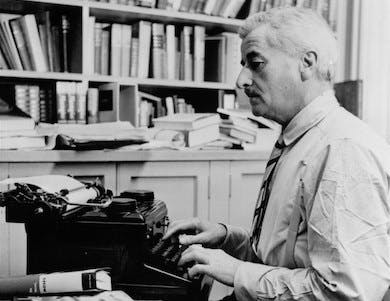Picturing William Faulkner in Verse: A Dream Come True
Biography, autobiography, and critical commentary all merge in this unique book about a past that never ends but that can be remade in poetry that is very much alive now.

‘Faulkner: Critical Commentary in Verse’
By Robert Hamblin
Illustrations by Evelyn Mayton
Independently published, 130 pages
An illustrated biography of William Faulkner is something I’ve often wished for, with drawings that could evoke better than photographs the spirit of the place and the man who created so much great fiction. I never supposed such a volume would come in the form of illustrated verse, but compressing Faulkner into figure and line yields a meditative, even ethereal biography.
The book opens with Evelyn Mayton’s exquisite drawing of Rowan Oak, the antebellum home Faulkner restored — and that has become a shrine for those on Southern literary tours. Ms. Mayton’s illustration has an almost ghostly feel, showing the tree-lined entrance to that house that is an invitation to imagine the man and his work, and the place where he delighted in telling Halloween stories to children.
Mr. Hamblin shifts between first person (talking to Faulkner) and third person, describing Faulkner, his people, and his characters without all the paraphernalia of scholarly documentation that he is well accustomed to in his career as a Faulkner scholar.
Ms. Mayton’s drawing of Faulkner’s great-grandfather, the wistful-looking “Old Colonel,” as the Civil War veteran was known to his family and community, is described in Mr. Hamblin’s poem as “Soldier, railroad builder/ plantation owner, politician.” The poet addresses Faulkner directly: “You had to know that he fathered/ children by one of his slaves. /Most in the family/ denied what they knew.” Faulkner was never forthright about his family history outside of his fiction, but Mr. Hamblin, referring to a Faulkner story, tells him: “You left us a clue./ In ‘There Was a Queen,’ /Elnora, the black servant is known to be the daughter/ of Colonel John Sartoris, / modeled on Colonel Falkner” (who spelled the family name without a u).
Illustrations and poems deal with Faulkner’s father (“An alcoholic, embodiment/of the decline in the family”), Mammy Callie (“Your other mother,/ the black one … kind and nurturing”), Phil Stone (“You guided his reading. … You paid to have his first book published”), “Memphis” (“Where you sat with your beloved Aunt ’Bama. … Where you visited with Phil Stone/ the brothels and bootleggers’ joints”), and “Eliot” (“Faulkner was Prufrock. / So many were—/still are”).
In one of Mr. Hamblin’s most brilliant poems, “Faulkner’s Gatsby,” he quotes F. Scott Fitzgerald’s narrator, Nick Carraway, who tells Gatsby, “You can’t repeat the past,” to which Gatsby replies: “Why of course you can. / I’m going to fix everything / just the way it was before.” This is Quentin Compson’s quest in “The Sound and the Fury”: to destroy the forward movement of time by twisting off the hands of his watch. What Quentin is protesting, Mr. Hamblin suggests, is that we live in a fallen world, and can no longer hear what Quentin longs for: “The Voice that breathed o’er Eden,” which is quoted in the poem.
The symbol of the fallen world for Quentin is his sister’s burgeoning sexuality. Only in the novel, or in a four-line poem, titled “Swiftian,” can Quentin’s agitation and isolation be summed up in his cry, her name, and a devastating final word:
Poor Quentin!
Such sad, sad news.
Caddy, Caddy, Caddy
screws.
Robert Hamblin was studying at the University of Mississippi on the day James Meredith came to enroll, an African American with the stubbornness and courage of Faulkner’s fictional Black hero, Lucas Beauchamp. As Mr. Hamblin puts it: “One day it’s James Meredith/ walking across the Ole Miss campus. / Next day it’s Lucas Beauchamp / walking across the pages of a book.” Thinking of Faulkner’s novel “Intruder in the Dust,” in which Lucas is almost lynched, Mr. Hamblin, a soldier as well as a student that day on campus, concludes: “Fiction and reality had merged, / and I would never again be the same.”
Biography, autobiography, and critical commentary all merge in this unique book about a past that never ends but that can be remade in poetry that is very much alive now — in Mr. Hamblin’s gallant portrait of Faulkner’s wife, Estelle, ignored or devalued by biographers, but restored to her proper place in the Faulkner pantheon by one of Ms. Mayton’s most graceful portraits of a woman, “intelligent, charming, creative.”
Mr. Rollyson is the author of “William Faulkner Day by Day” and the forthcoming “Faulkner On and Off the Page: Essays in Biographical Criticism.”

